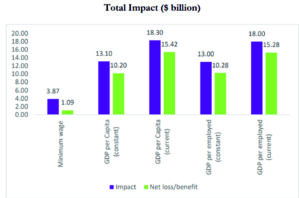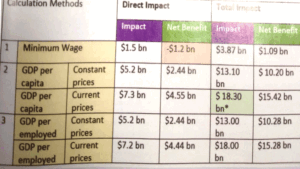Stanford University Report
This Report by Stanford University discussed how India under the visionary leadership of Prime Minister Shri Narendra Modi adopted a ‘Whole of Government’ and ‘Whole of Society’ approach in a proactive & graded manner by adopting a holistic response strategy, for effective management of Covid-19 Pandemic. The report further highlighted that robust measures at the ground level, like contact tracing, mass testing, home quarantine, revamping healthcare infra and constant coordination among stakeholders at levels, not only helped contain the spread of the virus but also augmented the health infrastructure in India. Excerpts :
Impact of Lockdown :
–According to the Ministry of Health and Family Welfare statistical analysis, the COVID-19 tally could have reached about 2 lakhs (0.2 million) without lockdown by April 11, 2020.
–Due to lockdown measures, the actual cases only went up to about 7500 by April 11, 2020, making a case for lockdown stronger
–2 Million Deaths were avoided due to the imposition of the lockdown
–100,000 Lives saved due to lockdown (March-April) according to the Economic Survey (2020-21)
–200,000 COVID-19 tally if there was no lockdown and containment by April 11, 2020
–“India was able to save more than 100,000 (0.1 million) lives through the lockdown in March-April 2020. Moreover, the country took around 175 days to reach the peak from its first 100 cases, while most countries reached their first peak in less than 50 days (Russia, Canada, France, Italy, Germany, etc.)
Fiscal Package
–Fiscal policy measures positively impacted economic activity and reduced unemployment.
–In May 2020, India announced a relief package for around 10% of its GDP – about 20 lakh crores (about $ 282 billion)
–In the initial months of the pandemic, the relief response was more in the area of above-the-line measures providing support in-kind in the form of food and cooking gas, cash transfers to low-income households, employment provision to low-wage workers, insurance coverage for workers in the healthcare sector, etc.
–Later in the pandemic, in October and November 2020, the measures announced included support schemes for certain sectors, some of which included credit support to businesses, and poor households and targeted support for some sectors.
–Under Pradhan Mantri Garib Kalyan Yojana, 89-94% of households in Rajasthan, Madhya Pradesh & Uttar Pradesh benefited from the direct cash transfer in the package and thus observed a positive impact of the government’s package on easing credit constraints for the agricultural sector. (Varshney et al.)
–75% of migrant laborers in Delhi benefitted from the relief measures
–Aatmanirbhar Bharat Abhiyan package reached about 10% of the GDP
–Economic Impact of announced relief packages on MSMEs is equal to $ 110.18 billion. This comes out to be roughly 5.38% of the GDP
–If shutdown rate of 9% is applied then number comes down to $ 100.26 billion, which comes out to be about 4.90% of the GDP


Impact on Social Sector & Employment
–The Economic Impact of Pradhan Mantri Garib Kalyan Yojana is $ 26.24 billion
–With a comprehensive package that encompassed people belonging to old age, women, farmers and the working class, the PMGKY ensured that the impact on the livelihoods of these people was moderated to an extent, whereas, on the other side, by distributing free food grains to poor people under the PMGKAY, the government ensured that no one slept hungry
–For Aatmanirbhar Bharat Rozgar Yojana, the benefit was availed by 59,84,256 beneficiaries. The Economic Impact by the scheme was $ 7 billion
–Through PM Garib Kalyan Rozgar Yojana, 50.78 crore man days were provided.
Considering that the scheme offers 125 days of employment for one person, the number of beneficiaries can be calculated as 50.78 crore man days/125 days. Thus, beneficiaries of the scheme become 40,62,400.
–The economic impact of the scheme was $ 4.81 billion
Impact on Agriculture
–Under the NABARD scheme Rs. 30,000 crore ($4.23 billion) was sanctioned from which Rs. 25,000 crore ($3.52 billion) was disbursed to cooperatives, district cooperatives and regional rural banks
–The government announced this emergency capital fund over and above the Rs. 90,000 crores ($12.70 billion) already approved earlier by NABARD
–Under Pradhan Mantri Matsya Sampada Yojana, more than 8 lakh beneficiaries had enrolled themselves, and an amount of almost Rs. 361 crores ($0.05 billion) was spent for the welfare of the fishermen. This was pivotal given the sector provides livelihood to about 16 million fishers and fish farmers at the primary level and almost twice the number along the value chain
–The agriculture infrastructure fund for farm gate infrastructure was essentially a medium to long-run debt financing scheme for investment in postharvest management infrastructure and community farming projects
–The scheme helped about 10,394 projects with an overall assistance of Rs. 7,677 crore ($1.08 billion)
–The fourth scheme, Kisan Credit Card, was a scheme which envisaged to provide universal access to institutional concessional credit to all farmers including animal 4 husbandry, dairy and fisheries farmers with a special focus on coverage of PM-KISAN42 beneficiaries
–The scheme – with an outlay of about Rs. 2,00,000 crore ($28.21 billion) covered about 2.5 crore beneficiaries with a sanctioned credit limit of about Rs. 1,35,000 crore ($19.04 billion), i.e., out of Rs. 2 lakh crores more than two-third amount was sanctioned for disbursement as loans
–The fifth scheme, the operation green scheme, aims to protect the growers of fruits and vegetables from making distress sales due to lockdown and reduce post-harvest losses.
–It involved a subsidy @50% of the cost of the two components namely; transportation of eligible crops from the surplus production cluster to the consumption centre; and hiring of appropriate storage facilities for eligible crops (for a maximum period of 3 months)
–Before the pandemic, the scheme covered tomatoes, onions and potatoes; however, given the pandemic the scheme expanded to 41 notified fruits and vegetables (short run) and 22 fruits and vegetables (long run)
–In terms of numbers, the scheme got an allocation of Rs. 38.22 crore ($5.39 million) of which Rs. 38.21 crores ($5.38 million) was disbursed
–Under the sixth scheme, the national beekeeping & honey mission, 45 projects with an amount of Rs. 88 crores ($12.41 million) were sanctioned
Total Amount Allocated $ 49.4 billion
Total Amount Availed/Disbursed: $ 23.7 billion
Impact of COVID-19 Vaccination
–A Lancet modelling study estimates that in India around 34,22,00054 deaths were prevented by vaccination in the year 2021, an estimate based on officially reported deaths in India
–Direct Impact – Potential income generated by lives saved due to vaccination: $ 1.5 billion (RS. 11,000 crore) (Using Minimum Wage Method)
–With Expenditure incurred on Vaccination, a net loss of Rs 8675 crores ($1.2 Billion)
–Total Impact – Multiplier effect from lives saved due to vaccination: $ 3.87 billion (RS. 27,000) (Using Minimum Wage Method)
Direct Impact in Terms of GDP Per Capita
-At Constant Prices – Direct impact of lives saved in terms of GDP per capita: $ 5.2 billion (RS. 37,000 crore) Net Benefit/Cost: $ 2.44 billion
-At Current Prices – Direct impact of lives saved in terms of GDP per capita: $ 7.3 billion (RS. 51,900 crore) Net Benefit/Cost: $ 4.55 billion
-Total Impact at Constant Prices – Multiplier effect from lives saved in terms of GDP per capita: $ 13.1 billion Net Benefit/Loss: $ 10.2 billion
-At Current Prices – Multiplier effect from lives saved in terms of GDP per capita: $ 18.3 billion Net Benefit/Loss: $ 15.42 billion
GDP Per Person Employed
-At Constant Prices – Direct impact of lives saved in terms of GDP per person employed: $ 5.2 billion (RS. 37,000 crore) Net Benefit/Cost: $ 2.44 billion
-At Current Prices – Direct impact of lives saved in terms of GDP per person employed: $ 7.2 billion (51,200 crore) Net Benefit/Cost: $ 4.44 billion Total Impact
-At Constant Prices – Multiplier effect from lives saved in terms of GDP per person employed: $ 13 billion (RS. 92,600 crore) Net Benefit/Cost: $ 10.28 billion
-At Current Prices – Multiplier effect from lives saved in terms of GDP per person employed: $ 18 billion Net Benefit/Cost: $ 15.28 billion
Economic Impact of total lives saved due to vaccination, those belonging to the working age category:
Major Learnings:
–The direct and total impact of vaccination varied from about $ 1.03 billion to $ 2.58 billion if minimum wages are considered with age distribution category
–The same, however, varied from about $ 3.49 billion to $ 8.7 billion if GDP per person employed (constant) is considered
–The net benefit/loss varied from (-) $1.74 to (-) $0.2 billion for minimum wages, whereas it varied from $0.71 to $5.95 billion for GDP per person employed (constant)
–The cumulative lifetime earnings of the lives saved through vaccination (in the working age group) tolled up to $ 21.5 billion
–Moreover, since vaccination also saved the lives of the elderly, this indirectly helped preventing the health infrastructure from getting overwhelmed and thereby allowing for a more judicious use of the existing health infrastructure
–Therefore, it can be concluded that vaccination was effective in achieving the dual motive of saving lives and livelihoods.


